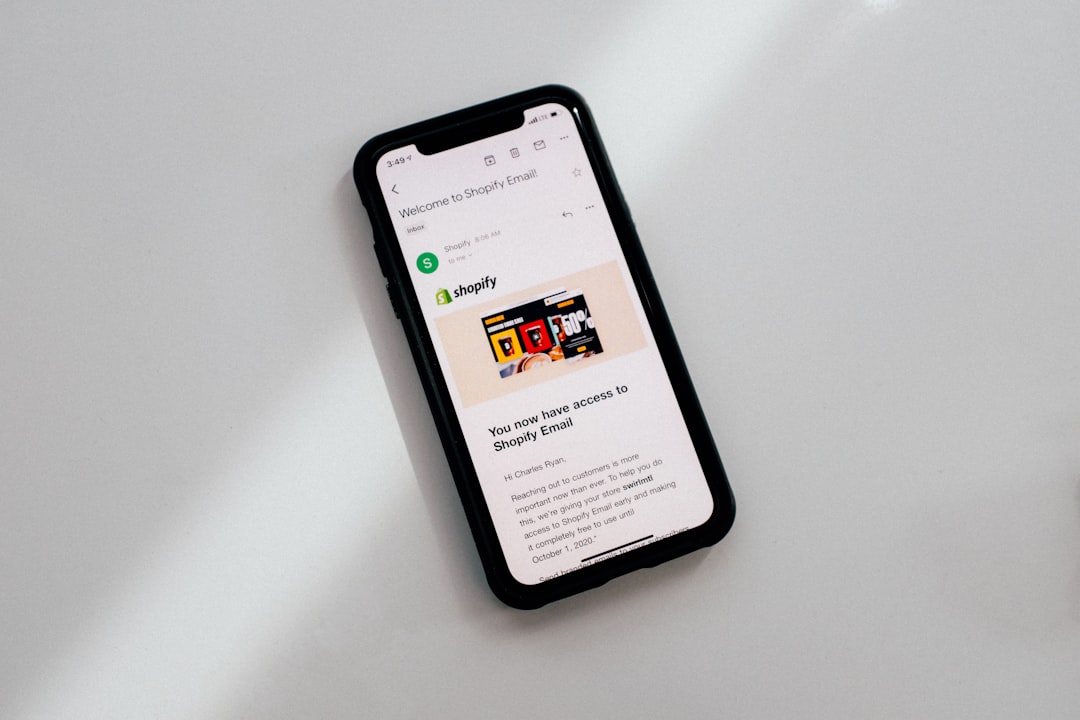Table of Contents
- Introduction
- Identifying Key Demographic Segments
- Behavioral Segmentation and Analysis
- Creating Buyer Personas for Personalization
- Utilizing Psychographic Insights
- Leveraging Geographic Data for Localized Offers
- Integrating Segmentation with Marketing Channels
- Testing and Optimizing Segmentation Strategies
- Measuring the Success of Targeted Promotions
- Conclusion
- Frequently Asked Questions
Introduction
Imagine transforming your marketing strategy literally overnight by tapping into the potent tool of user segmentation. By understanding your audience and crafting promotions tailored to their unique preferences, you can substantially boost your profits. But how exactly do you start this transformation?
In this article, we’ll unlock the secrets behind effective user segmentation and how you can leverage it to supercharge your business strategy. Whether you’re a seasoned marketer or a business owner diving into digital marketing for the first time, understanding user segmentation can make all the difference in your campaign outcomes.
| User Group | Key Offer | Objective |
|---|---|---|
| New Subscribers | Welcome Discounts | Drive Initial Purchases |
| Loyal Customers | Exclusive Previews | Retain Engagement |
| Cart Abandoners | Personalized Reminders | Recover Sales |
Join us as we delve into how to structure your user segmentation strategy effectively maximizing your return on investment.
Identifying Key Demographic Segments
Identifying key demographic segments is a pivotal step in effectively leveraging user segmentation for targeted promotions or offers. Demographics encompass a range of statistical data relating to the population and particular groups within it, such as age, gender, income, education level, and ethnicity. Understanding these demographic components allows businesses to tailor their marketing efforts to the specific needs and preferences of different user groups. For instance, segmenting by age can help companies craft age-appropriate messages, ensuring they resonate well with the intended audience. Similarly, understanding income levels is crucial when designing promotions that appeal to varied purchasing powers.
Furthermore, demographic data can be merged with psychographic and behavioral insights to create even more refined customer profiles. This comprehensive approach enables businesses to anticipate the preferences of specific groups effectively. By analyzing customer purchase history, web activity, and social media interactions, companies can identify patterns and trends that inform future promotional strategies. Ultimately, the goal is to ensure that every segment receives offers that feel personalized and relevant, which can significantly enhance engagement, brand loyalty, and conversion rates. As markets become more saturated, understanding and applying demographic segmentation becomes increasingly essential for standing out in the competitive landscape.
Behavioral Segmentation and Analysis
Behavioral segmentation and analysis are crucial elements in modern marketing strategies, allowing businesses to target promotions and offers effectively. This approach involves dividing a customer base into segments based on their behavior patterns, such as purchase history, interactions with the brand, and loyalty levels. By understanding these behaviors, companies can create more personalized and relevant marketing campaigns.
For instance, a common method of behavioral segmentation is by analyzing transaction history to identify frequent purchasers, occasional buyers, and potential one-time shoppers. By categorizing customers into these segments, businesses can tailor their promotions accordingly, such as offering loyalty discounts to frequent purchasers or special introductory offers to new customers.
Furthermore, analyzing customer behavior can highlight patterns such as preferred shopping times, favorite products, and response to discounts or offers. This data enables marketing teams to fine-tune their strategies and deliver promotions that resonate with each segment, ultimately enhancing customer engagement and conversion rates. Behavioral analysis, therefore, acts as a bridge between customer data and actionable marketing insights, ensuring that promotions not only reach the right audience but also cater to their specific needs and preferences.
Creating Buyer Personas for Personalization
Creating buyer personas is an essential step for businesses aiming to personalize their marketing efforts effectively. A buyer persona is a semi-fictional representation of your ideal customer, based on market research and real data about your existing customers. To construct accurate personas, businesses should consider demographics, behavior patterns, motivations, and goals. Start by analyzing your customer base and segment it according to shared characteristics. Collect data through surveys, interviews, and analytics to understand your audience’s needs and preferences.
Once you’ve gathered sufficient data, categorize your audience into distinct personas. Each persona should have a name, age, occupation, and specific interests or problems they need solving. This humanizes your target segments, making it easier to tailor your promotions or offers. For instance, if one of your personas is a tech-savvy young adult, you might focus on digital marketing strategies, such as social media ads or email campaigns.
By aligning your promotional strategies with your buyer personas, you can deliver more relevant and engaging content, which in turn fosters better customer relationships and enhances brand loyalty. This approach ensures you’re not just broadcasting messages but interacting in a way that resonates deeply with each individual segment.
Utilizing Psychographic Insights
Utilizing psychographic insights allows businesses to delve deeper into consumer behavior, offering a more targeted approach to marketing. Unlike demographic data, which focuses on who the customer is in terms of age, gender, or income level, psychographics explore why customers behave the way they do. This involves understanding their interests, personalities, values, and lifestyle choices. By assessing these characteristics, companies can segment their audience more effectively and tailor their promotions to align with specific customer profiles.
For example, a fitness brand might use psychographic insights to identify a subgroup of health-conscious consumers who prioritize sustainability. This knowledge can drive the creation of targeted promotions for eco-friendly product lines, thereby increasing engagement with this audience. Furthermore, personalized messaging that resonates with customers’ core values can foster loyalty and enhance the overall brand experience.
Implementing psychographic data within segmentation strategies requires thorough market research and data analysis. Surveys, social media analytics, and customer feedback are valuable tools for gathering the necessary information. Once this data is obtained, businesses can craft marketing campaigns that not only address the needs and wants of their audience but also align closely with their attitudes and lifestyle choices. In summary, psychographic insights are instrumental in creating meaningful connections with customers.
Leveraging Geographic Data for Localized Offers
Leveraging geographic data is a strategic approach for businesses aiming to deliver localized offers that resonate with specific audiences. By understanding the geographic location of users, companies can tailor their promotions to align with local events, customs, and weather conditions. This strategy helps in creating personalized experiences that enhance user engagement and drive higher conversion rates. Additionally, using geographic data allows businesses to optimize their marketing spend by focusing efforts on areas with the highest potential. For example, a retail store might offer special discounts to customers in a region experiencing a seasonal change, thereby capitalizing on the shifting needs of the consumers. Furthermore, geo-targeting enables businesses to complement their online strategies with offline intent, such as driving foot traffic to local stores. By integrating geographic data into their user segmentation efforts, businesses can efficiently deliver promotions that not only meet the immediate needs of their customers but also build lasting relationships through relevant and timely offers.
Integrating Segmentation with Marketing Channels
Integrating segmentation with marketing channels is crucial for delivering precise and targeted promotions. By categorizing users based on characteristics such as demographics, behavior, or purchase history, marketers can tailor their messages to resonate with specific segments. This approach not only enhances customer engagement but also improves conversion rates. For instance, email marketing can be personalized by segmenting subscribers into groups such as frequent buyers, one-time customers, or inactive users. Each group can receive different promotions crafted to re-engage or reward them.
Further, social media platforms allow for sophisticated segmentation options where ads can target users based on interests, past interactions, or even life events. By aligning segmentation strategies with specific marketing channels, businesses can ensure their offers reach the right audience at the right time.
Moreover, integrating segmentation with analytics tools enables real-time data tracking and campaign performance assessment, allowing for quick adjustments and optimization of marketing strategies. Ultimately, the integration of segmentation with various marketing channels provides a solid foundation for personalized communication, fostering stronger relationships with customers and potentially increasing brand loyalty and revenue.
Testing and Optimizing Segmentation Strategies
Testing and optimizing segmentation strategies is crucial for delivering effective targeted promotions or offers. The first step in this process involves defining clear objectives that align with business goals. By understanding what you aim to achieve, whether it’s increasing sales, enhancing customer engagement, or improving brand loyalty, you can select the appropriate metrics to measure success. Once objectives are set, experimenting with different segmentation criteria, such as demographics, behaviors, or purchasing patterns, can reveal which combinations yield the most favorable outcomes.
Implementation of A/B testing can be highly beneficial in this context. By sending different versions of a promotion to sub-segments of your audience, you can determine which version performs better in terms of open rates, click-throughs, or conversion rates. It is essential to continuously monitor these metrics and gather data-driven insights to refine your strategies further. Regularly revisiting and adjusting the segmentation criteria based on customer feedback and market trends also helps in staying relevant.
Ultimately, the goal is to ensure that your segmentation effectively addresses the individual needs and preferences of your audience, thereby enhancing their overall experience with your brand.
Measuring the Success of Targeted Promotions
Measuring the success of targeted promotions is crucial for businesses to understand their effectiveness and optimize future campaigns. Key performance indicators (KPIs) such as conversion rates, click-through rates, and customer engagement levels are essential metrics to consider. Conversion rates indicate how well a promotion leads to the desired action, such as purchases or sign-ups, while click-through rates help assess the effectiveness of the promotional material in capturing user interest.
Moreover, customer engagement levels can be tracked through metrics like time spent on the site and social media interactions. Analyzing these KPIs provides actionable insights into which segments respond best to promotions and highlights areas for improvement.
Additionally, businesses can leverage tools like A/B testing to compare the performance of different promotional strategies among user segments. By analyzing the data collected from these tests, companies can refine their targeting strategies to better meet consumer preferences and enhance overall marketing efficiency. Regularly reviewing and adjusting your approach based on these results ensures that targeted promotions remain relevant and effective, ultimately leading to increased customer satisfaction and higher revenue.
Conclusion
In conclusion, user segmentation stands as a cornerstone strategy for businesses seeking to maximize the effectiveness of their targeted promotions. By carefully analyzing and categorizing users according to demographics, behavior, psychographics, and geography, companies can craft personalized marketing strategies that not only attract but also retain customers. The insights gained from buyer personas and psychographic data empower brands to connect with their audience on a deeper level, tailoring messages that resonate with individual needs and values.
Moreover, integrating segmentation with appropriate marketing channels ensures that promotional efforts reach the right audience in the most impactful way. By continuously testing and optimizing segmentation strategies, businesses can refine their approaches to maximize outcomes and drive profitability. Measuring the success of these endeavors through KPIs and leveraging analytic tools provide invaluable feedback to adapt and evolve strategies, ensuring long-term success in a competitive marketplace.
User segmentation is not merely an operational tool but a dynamic process that enriches the marketing landscape, facilitating meaningful brand-customer interactions while elevating conversion rates and profitability.

